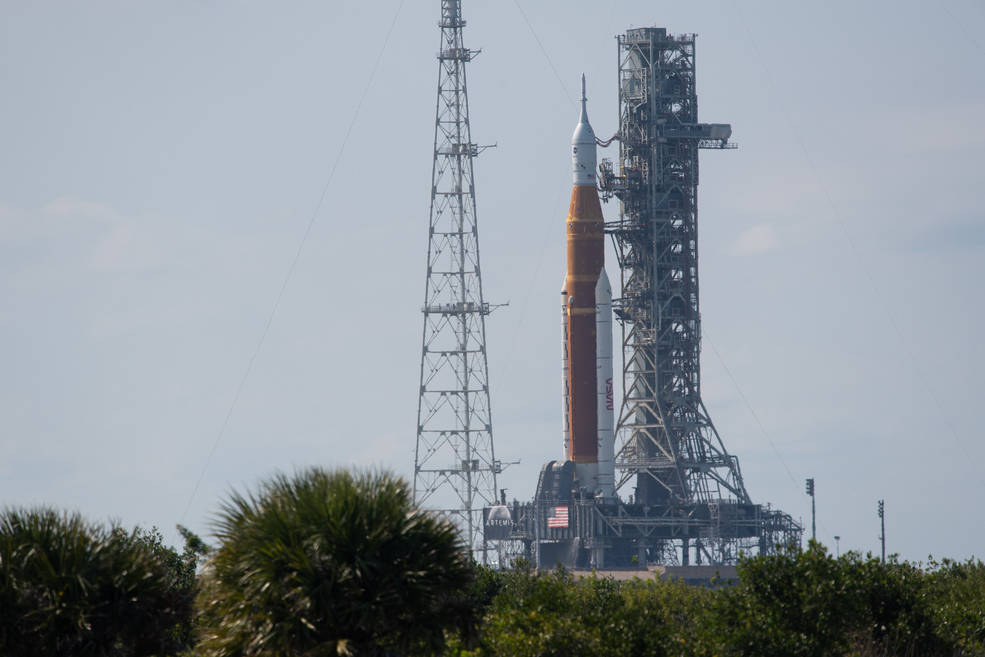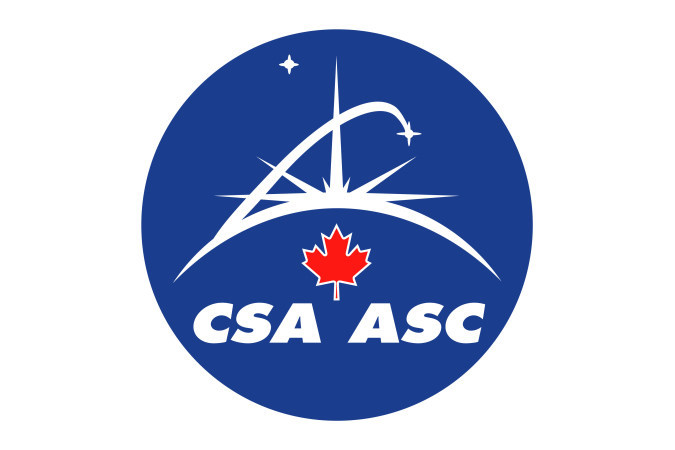The 1998 Florida Firestorm and NASA’s Kennedy Space Center
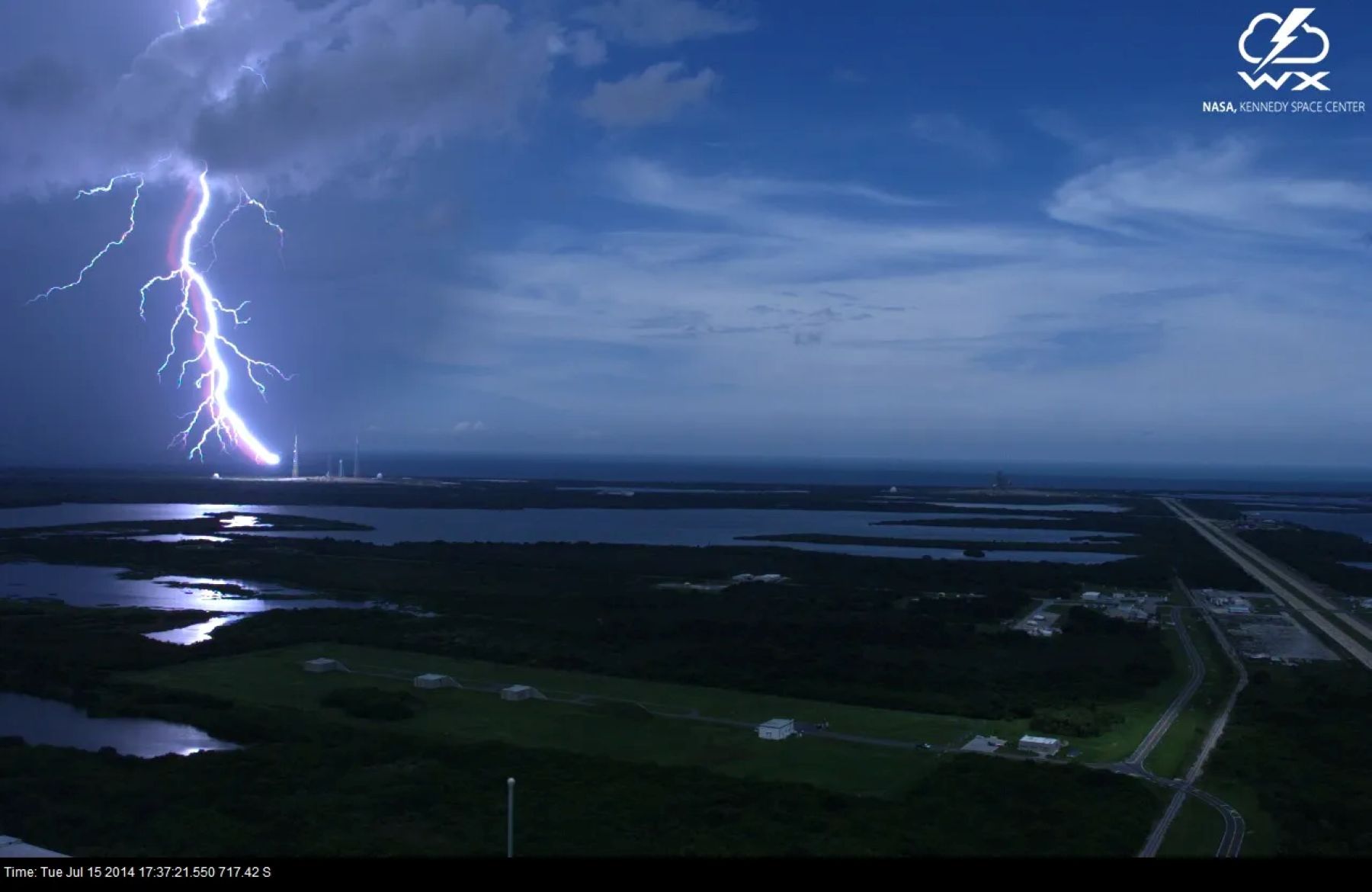
East central Florida’s natural environment and climate have shaped, and delayed, Kennedy Space Center launch operations since the 1960s. Torrential pop-up thunderstorms, Atlantic hurricanes, roasting heat, and other climatic phenomena, including lightning and fire, repeatedly hampered mission timelines and created dangerous conditions for astronauts and workers.
Lightning Crashes
Kennedy Space Center personnel understood the dangers of lightning strikes all too well by 1998. In 1969, two bolts famously struck the Apollo 12 launch vehicle shortly after liftoff. A few years earlier, a worker was killed when lightning hit a Kennedy launch pad. These and other events motivated NASA to install new lightning rods and create new launch procedures.
https://www.youtube.com/embed/l11sW5KOi_g?feature=oembed&enablejsapi=1&origin=https://www.nasa.govThe opening segment of this video highlights the two lightning bolts that struck the Apollo 12 launch vehicle shortly after launch.
Fire in the Sky
Although NASA officials were familiar with the dangers lightning posed as the twenty-first century dawned, a 1998 lightning strike created an unprecedented environmental threat to Kennedy Space Center and its launch operations.
In May 1998, lightning sparked a fire in a wooded area of eastern central Florida. This lightning strike and fire were not extraordinary events. Quite the contrary. Over the course of central Florida’s long history, lightning regularly ignited wildfires in pine forests. These blazes were often short lived, but they served an important function. Namely, they burned off flammable undergrowth and rejuvenated Florida’s wilderness environments.
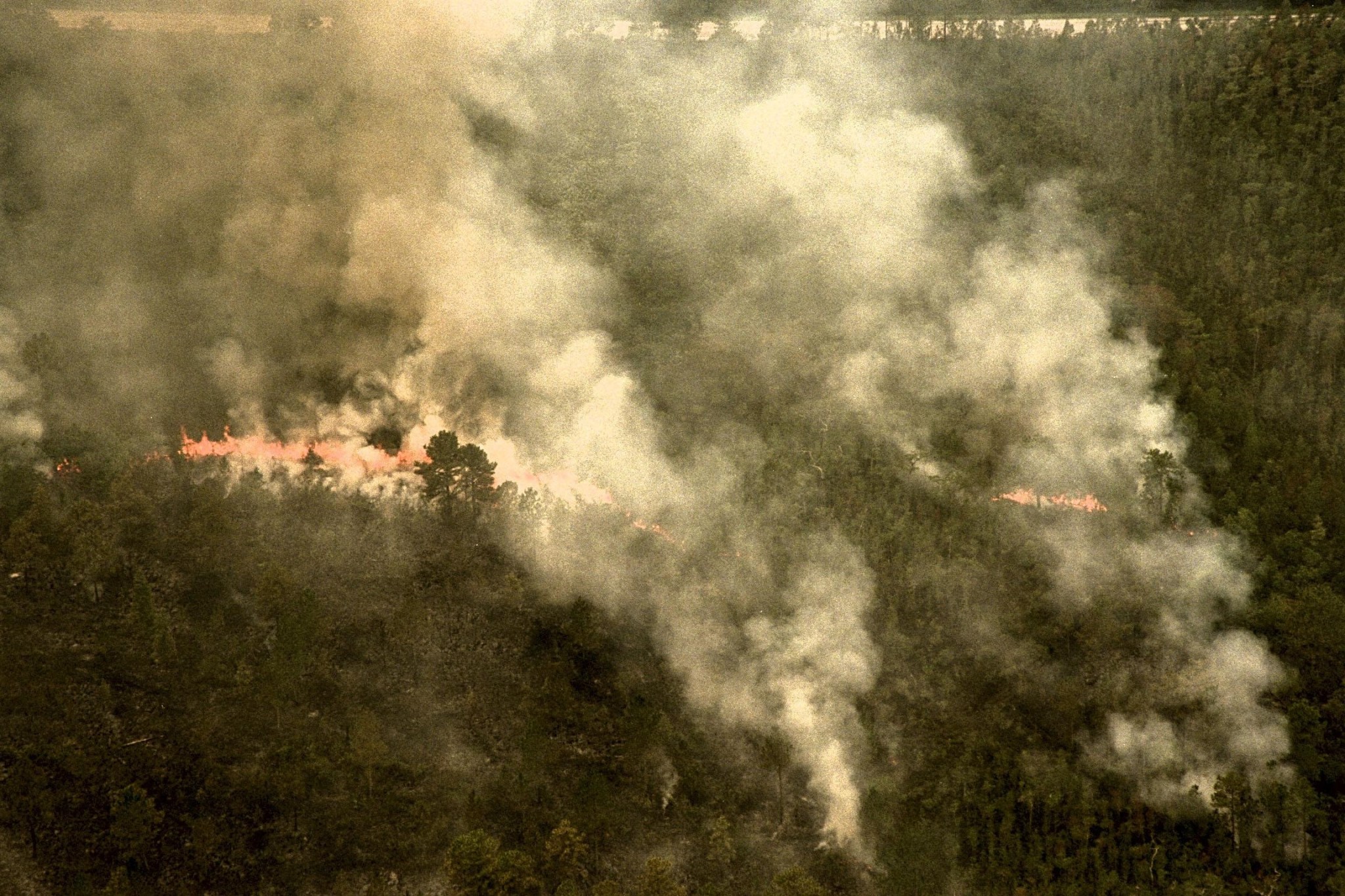
This photograph of an area of the 1998 Firestorm was taken from a NASA Huey UH-1 helicopter. The helicopter was outfitted with a Forward Looking Infrared Radar (FLIR) camera and a portable global positioning satellite (GPS) system to support Florida’s Division of Forestry as they fought the fire.
NASA
But the 1998 fire was different. Instead of a lightning strike creating a small fire, which rain and other natural conditions eventually extinguished, it grew into a colossal inferno dubbed the 1998 Firestorm. It was an inferno fed by other lightning sparked fires, a rainy winter, spring drought conditions, and fire suppression tactics.
Beginning in the mid-1900s, residents and fire officials in central Florida regularly extinguished wildfires before they had a chance to burn off flammable undergrowth. This led to a buildup of combustible material in the area’s woodlands. It was especially the case after a rainy winter season in early 1998 led to an abundance of low-lying vegetation. Fed by this tinder and a springtime drought, the summer fires spread quickly. They ultimately burned roughly 500,000 acres and created massive clouds of billowing smoke and other environmental hazards.
At one point the smoke from the fires was so thick, officials closed a 140-mile stretch of Interstate 95 and NASCAR officials postponed the annual 400-mile race at Daytona International Speedway, traditionally held on July 4th.
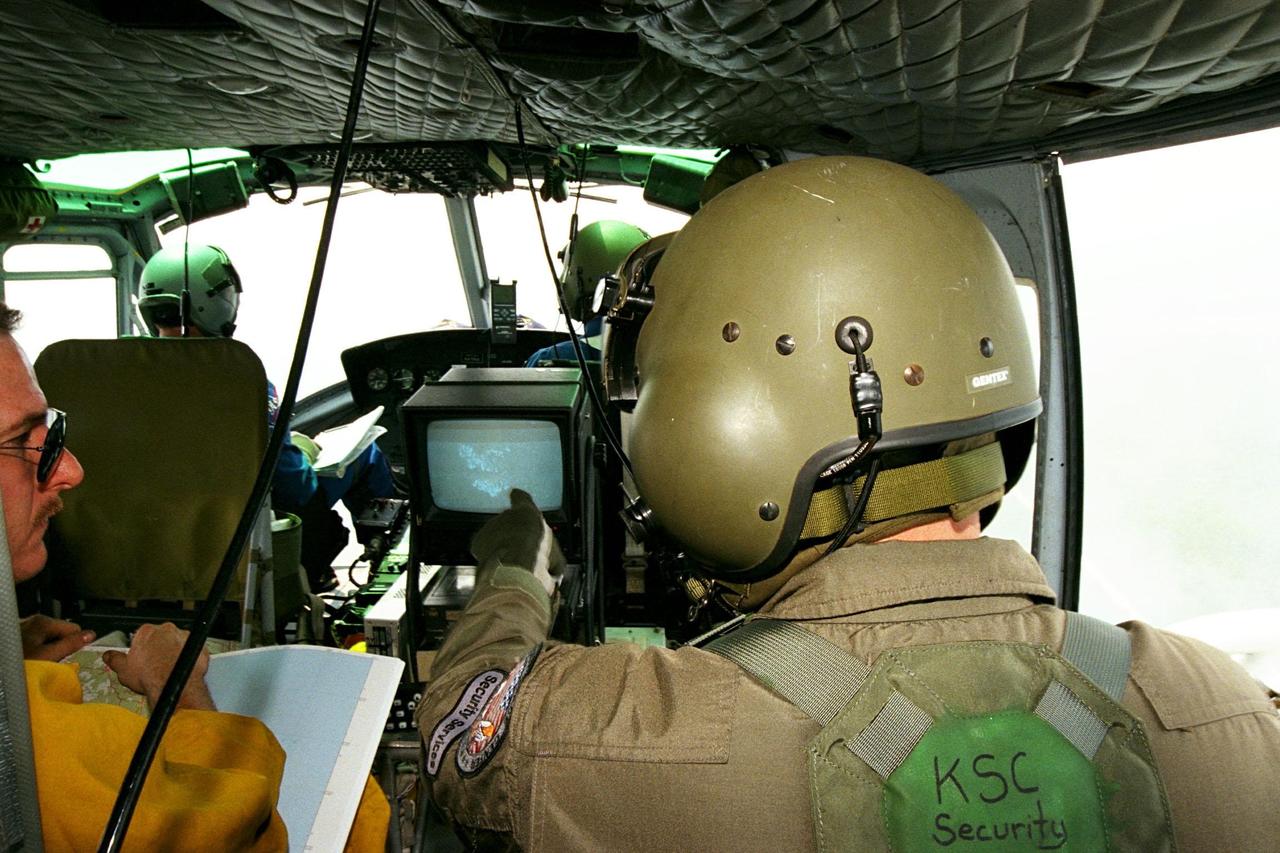
The scene inside a NASA Huey UH-1 helicopter while it flies over fires burning in Volusia County, Florida.
NASA
Battling the Blaze
In response to the flames, Brevard County fire official Jeffrey Mahoney publicly requested that Florida Governor Lawton Chiles provide more firefighters and resources. Mahoney argued, and many agreed, that the 500 firefighters valiantly battling the blaze in an effort to save homes and property were no match for the raging fire. “We are asking them to do the impossible,” Mahoney told a reporter during the early days of the fire.
We are asking them to do the impossible.”

JEFFREY MAHONEY
Brevard County Assistant Fire Chief
Understanding the severity of the situation, Governor Chiles and federal officials allocated more resources to fighting the fires. Ultimately, thousands of firefighters fought the blazes that raged throughout the state, including on Kennedy Space Center property.
Flames Threaten Kennedy
During the early weeks of the wildfire outbreak, NASA operations continued as usual. In early June, the agency successfully launched and landed STS-91. But ultimately the fires spread to center property and created operational concerns.
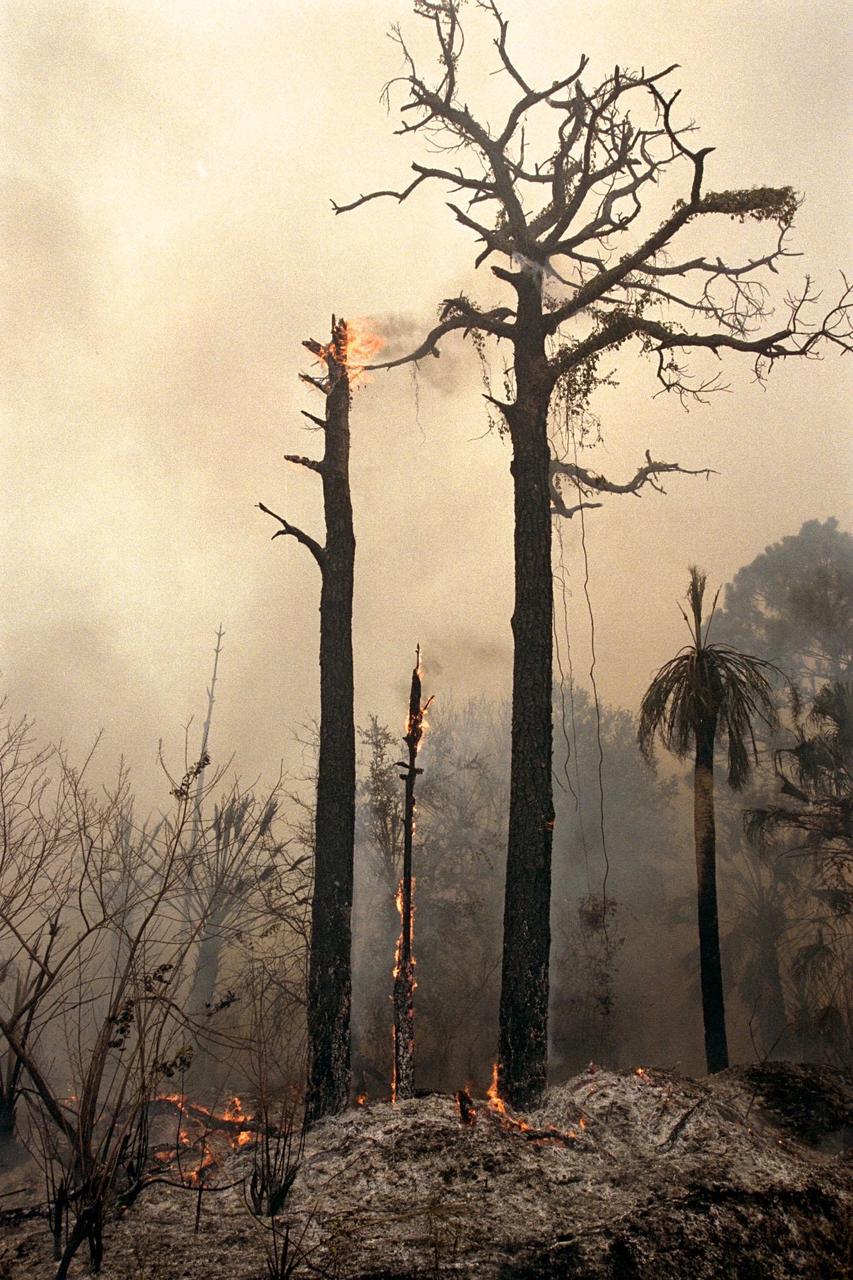
This photo of a burned wooded area on Kennedy property was taken on June 22, 1998. Around the time of this photo, fire threatened Kennedy Space Center’s South Repeater Building and other structures.
NASA
In late June, firefighters had to battle back a blaze that threatened the South Repeater Building, a fiber-optics relay station and storage facility on the south side of center property. By June 22, fires had burned 3,000 acres of the Merritt Island National Wildlife Refuge that surrounded Kennedy Space Center. The fire’s intensity and smoke even forced officials to temporarily close State Road 3.
Kennedy employee Lisa Braden was one of the last people to drive on the road before it was closed. “The smoke was so thick, you couldn’t see the road,” Braden told a reporter. “I went out on a job, and when I came back, the fire was crossing the street.”
Fortunately, by mid-July the arrival of long-hoped-for summer rains and successful fire control techniques helped extinguish most of the fires. Still, NASA launch officials remembered the firestorm in the weeks leading up to the October 1998 launch of STS-95.
Smoke and Shuttle Launches
It was in the shadows, or perhaps the smoke, of the fires that NASA created the STS-95 Flight Readiness Review. The document provides a window into the thinking and concerns of safety officials, launch controllers, NASA engineers, and more, just weeks before launch.
During the Shuttle Era, NASA’s readiness reviews accompanied the final readiness meeting the agency held two weeks before each launch. At this meeting, those involved in the mission ensured that earlier technical issues, and other concerns, had been satisfactorily resolved. Most importantly, a “go” or “no-go” launch decision was made at the end of this meeting.
Each readiness review document and meeting were unique. They each provide a window into the particulars of individual shuttle launches. The two Smoke Plume Rule diagrams in the STS-95 Flight Readiness Review, make it clear that launch officials had wildfire smoke on their minds.

This illustration is from the STS-95 Readiness Review. It reminded launch officials that a launch was a “no-go” if the shuttle was going to travel through a cumulus cloud attached to a smoke plume. Note the burning vegetation to the left of the shuttle.
NASA/Kennedy Space Center Archive
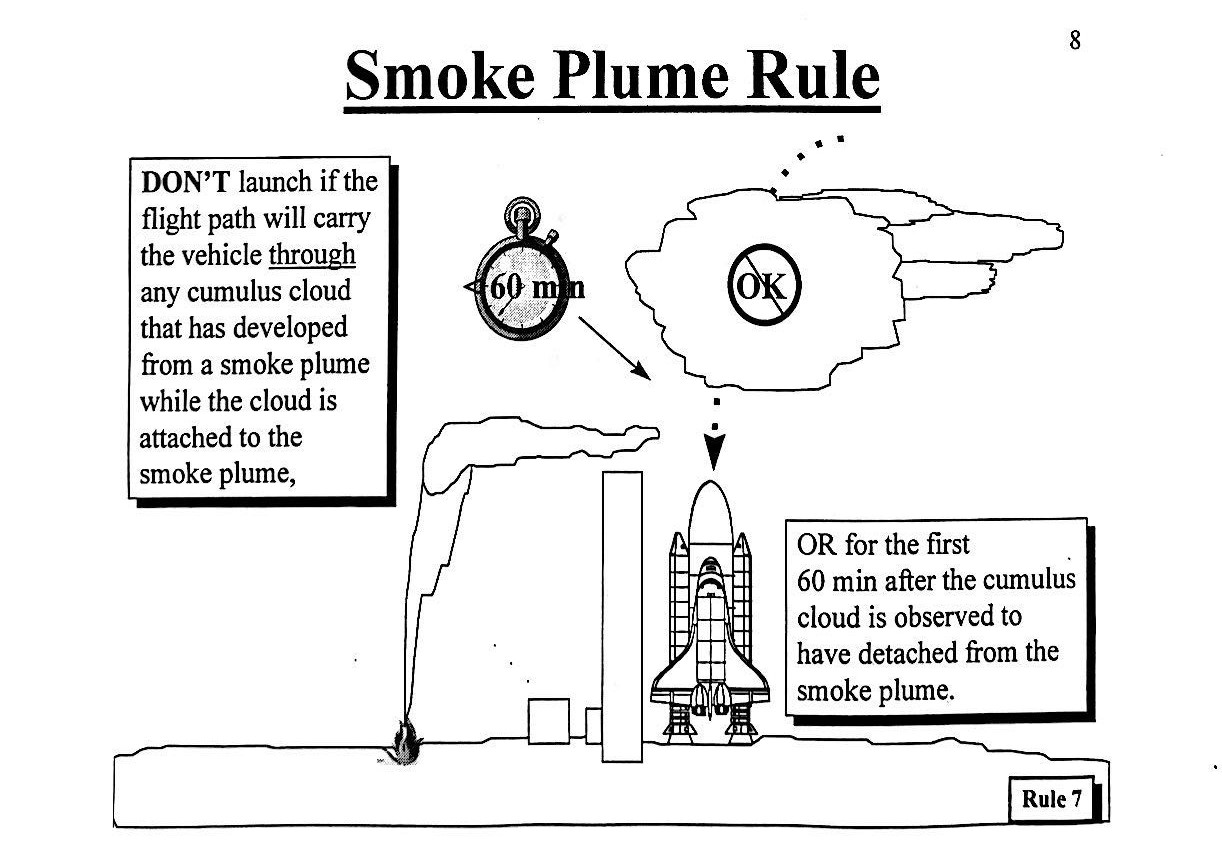
This second illustration is also from the STS-95 Flight Readiness Review. It highlights the part of the Smoke Plume Rule that states a shuttle should not be launched through a cumulus cloud that developed from a smoke plume, for at least 60 minutes after the cloud separates from the plume.
NASA/Kennedy Space Center Archive
STS-95 launched on a clear smoke-free day on October 29, 1998. Still, the charred Florida landscape Space Shuttle Discovery soared away from after liftoff stood as testament to the dangers of wildfire. With this in mind, officials took action to help ensure a fire event as widespread as the 1998 Firestorm never happened again.
Only You?
Since 1998, controlled burns have been regularly conducted throughout wooded areas of Florida and on Kennedy Space Center property. These prescribed burns were, in part, a legacy of the 1998 Firestorm. Along with prescribed burns, NASA developed and used other technologies and tactics to control wildfires on Kennedy property after 1998.
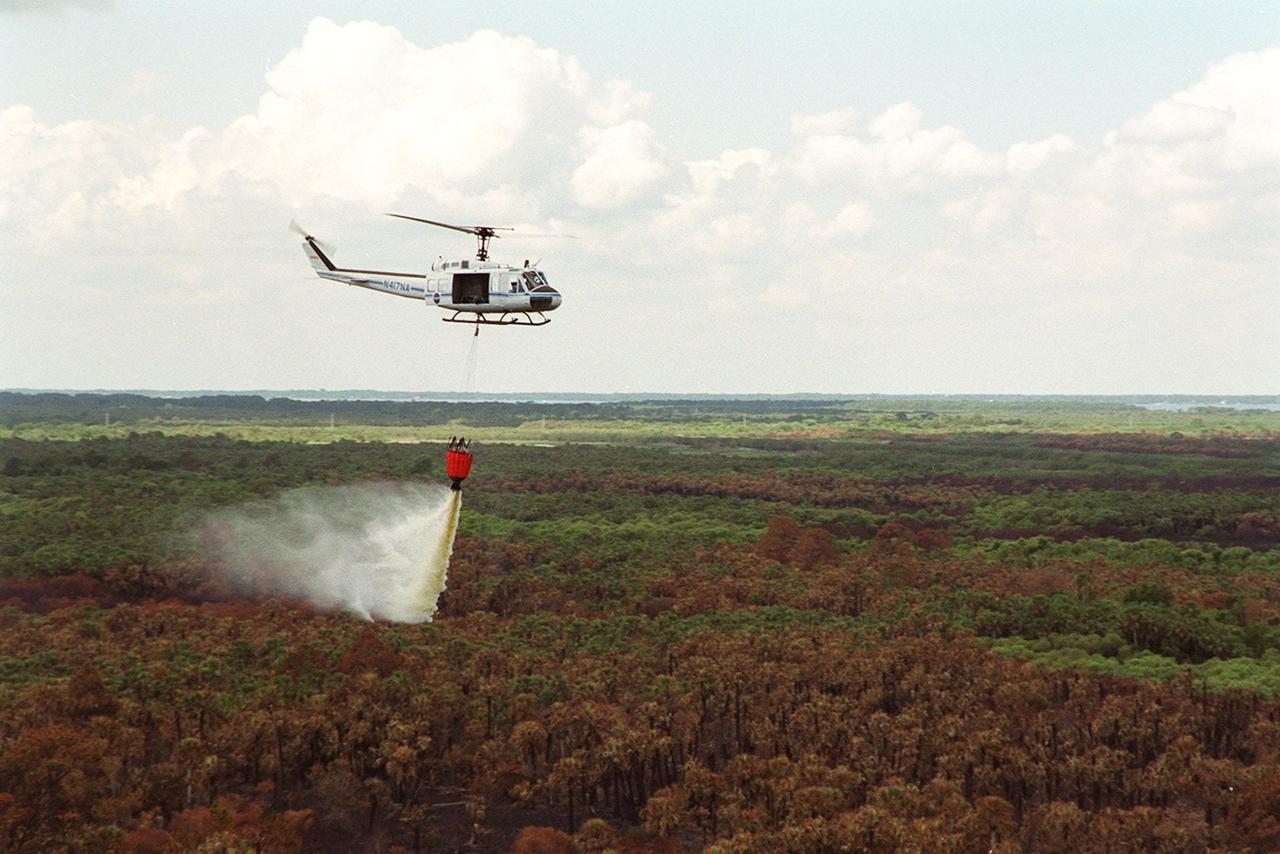
NASA used Huey UH-1 helicopters for security and medical evacuations before the 1998 fires. After the fires, NASA outfitted the helicopters with buckets designed to scoop up Florida coastal waters and drop them on wildfires. This photo, from 2000, shows a helicopter and bucket at work.
NASA
As the number of launches at Kennedy increases (in 2023 there were a record 72 orbital launches from Kennedy Space Center), and climate change makes severe weather more prevalent, prescribed burns and other wildfire control strategies are essential components of mission preparedness and environmental stewardship in and around the center.
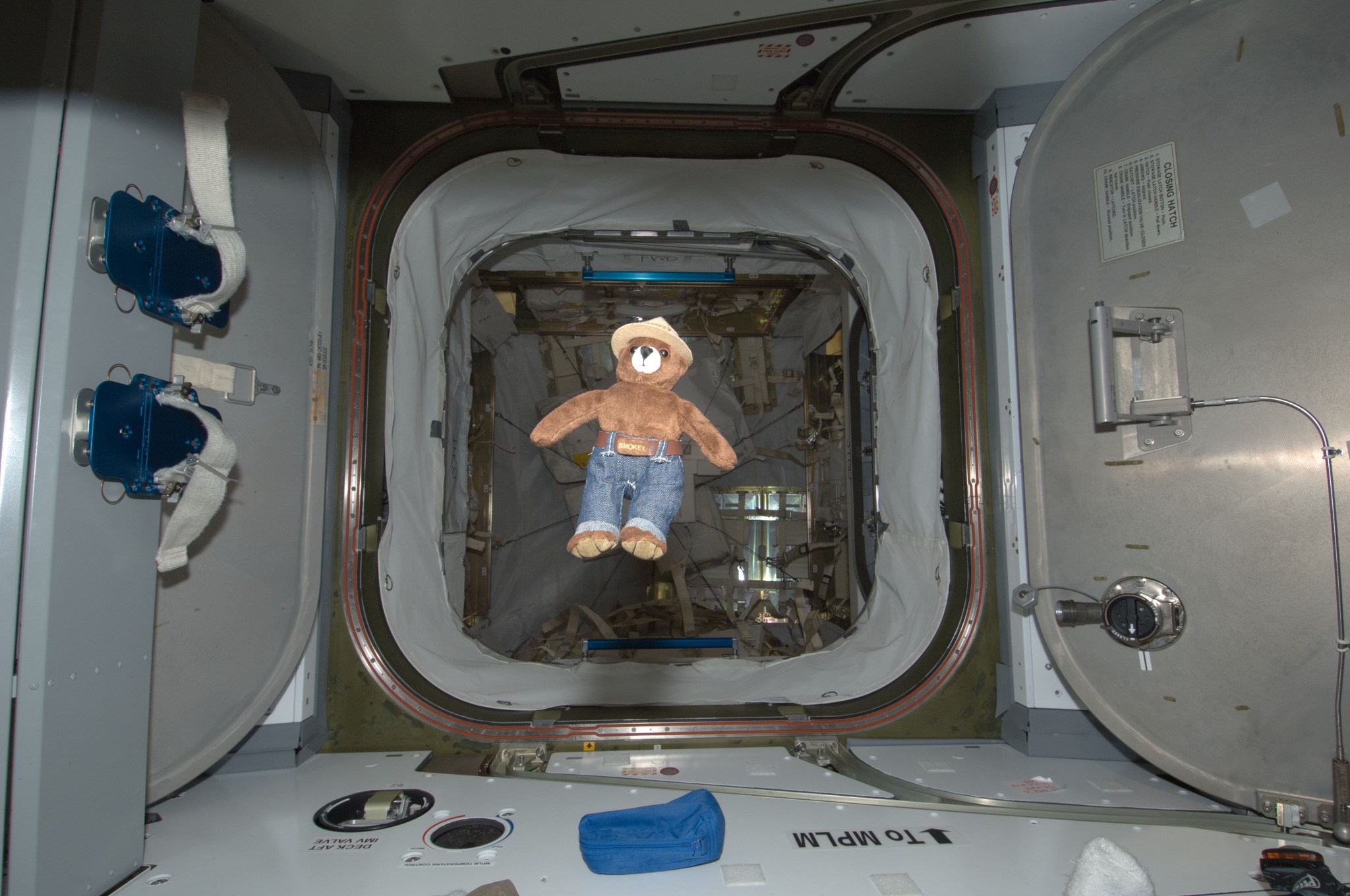
On May 15, 2012, Smokey the Bear traveled to the International Space Station with NASA astronaut Joe Acaba. As a recognized symbol for wildfire prevention, Smokey’s 2012 space adventure highlighted NASA initiatives dedicated to helping researchers better understand wildfires.
NASA

